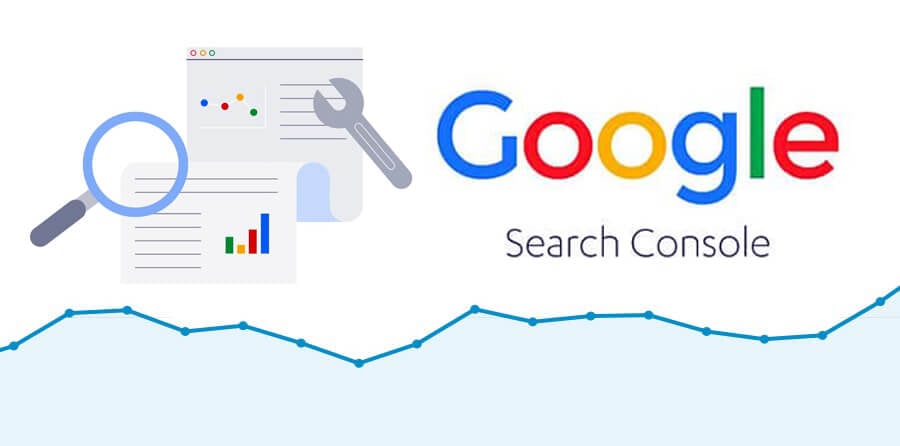Free Website Traffic: 14 Tactics That Actually Work
Discover proven strategies to boost your website traffic without spending a dime. Learn 14 actionable tactics that actually work to drive more visitors to your site.

In today's digital landscape, website traffic is the lifeblood of online success. For businesses and content creators alike, attracting visitors to their websites is crucial to boost visibility, engagement, and ultimately, conversions. While paid advertising can provide quick results, many are seeking cost-effective ways to increase web traffic organically. This quest for free website traffic has led to the development of numerous strategies and techniques.
This article delves into 14 proven tactics that work to drive traffic to websites without breaking the bank. From harnessing the power of content marketing and search engine optimization to leveraging video marketing and online communities, these methods offer a comprehensive approach to boosting website traffic. Additionally, readers will learn about the importance of email marketing, technical SEO implementation, and how to use Google Analytics to track and improve their website's performance. By applying these strategies, website owners can see a significant uptick in their organic traffic and overall online presence.
Harness the Power of Content Marketing
Content marketing has become a cornerstone of free website traffic generation. By creating valuable, informative, and engaging content, website owners can attract and retain visitors, ultimately boosting their online presence. Let's explore three effective strategies to harness the power of content marketing.
Start a Blog
Starting a blog is an excellent way to drive free traffic to a website. However, it's crucial to approach blogging strategically. Instead of focusing solely on writing quality content, website owners should have a plan to get traffic to their blog before they even start writing. This approach involves considering the target audience, the best ways to reach them, and how to ensure ongoing visibility for each post.
To maximize the impact of blogging, it's advisable to:
- Write with a purpose, focusing on content that has the potential to generate income or provide valuable experiences.
- Limit the frequency of posts to maintain quality and allow time for marketing efforts.
- Develop a marketing plan for each post to ensure continuous traffic growth.
By implementing these strategies, website owners can see a steady upward trend in traffic, rather than just short bursts when new content is published.
Create Evergreen Content
Evergreen content is a powerful tool for generating free website traffic over an extended period. This type of content remains valuable and relevant long after it's published, driving links, generating steady streams of traffic, and helping a website's popularity grow over time.
To create effective evergreen content:
- Focus on in-depth, comprehensive guides or articles that provide lasting value.
- Target keywords with consistent search volume.
- Include helpful images and tips that remain relevant over time.
- Update the content periodically to maintain its freshness and accuracy.
For example, a single piece of evergreen content can bring in 25,966 visitors every month. This demonstrates the long-term impact of well-crafted, timeless content on website traffic.
Repurpose Existing Content
Content repurposing is an efficient way to maximize the value of existing work while reaching new audiences. This strategy involves taking well-performing content and transforming it into different formats or updating it to serve a new purpose.
Benefits of content repurposing include:
- Increased web traffic by reaching new audiences on different platforms.
- Improved organic ranking by targeting additional related keywords.
- More opportunities for backlinks from mentions of the repurposed content.
- Time and resource savings while still providing fresh content.
Some effective ways to repurpose content include:
- Creating videos from written content for platforms like YouTube or TikTok.
- Turning blog posts into podcasts to build a dedicated community.
- Combining related posts into comprehensive PDF guides as lead magnets.
- Developing infographics to break down complex information visually.
By implementing these content marketing strategies, website owners can significantly increase their free website traffic, improve their online visibility, and engage with a broader audience across various platforms.
Optimize for Search Engines
Target Long-Tail Keywords
Long-tail keywords are longer, more specific phrases that are less commonly searched for than short-tail keywords. These phrases, typically consisting of three or more words, can have a significant impact on search engine optimization (SEO) and drive traffic to websites 1. One of the main benefits of using long-tail keywords is that they are less competitive than short, broad keywords, making it easier to rank well and attract more qualified leads.
To find the best long-tail keywords, website owners can use tools like Google Keyword Planner, SEMrush, Ubersuggest, and AnswerThePublic. These tools help identify relevant keywords with high search volumes and lower competition.
Incorporating long-tail keywords into a content strategy can save on paid advertising costs and provide more valuable, sustainable organic traffic. Interestingly, keywords that are 10-15 words in length tend to get 2.18 times the amount of clicks compared to keywords that are 1-2 words in length. Additionally, 77.91% of organic conversions come from keywords that are 3+ words.
Improve Site Structure
Website structure refers to how different pages of a website are interlinked and presented. A well-structured website makes it easier for visitors to navigate and for search engine crawlers to find new content, which helps improve search engine rankings 1. The most common website structure is that of an inverted pyramid, with the homepage at the top and more specific pages underneath.
To improve website structure for SEO, consider the following tips:
- Create a hierarchical structure that resembles a pyramid or organizational chart.
- Use internal linking to connect related pages and articles.
- Assign parent pages to content to avoid a flat website structure.
- Create an XML sitemap to help search engines understand the structure of your website.
- Keep navigation depth shallow, aiming for four clicks or less to reach any page.
Implementing a logical and user-friendly structure can lead to increased conversions and engagement. It also helps the remaining pages on the website rank better in search results because Google's bots can more easily crawl through the website.
Mobile Optimization
Mobile optimization is crucial for improving website traffic and search engine rankings. With mobile internet access skyrocketing in recent years, mobile market share now stands at over 55% compared to desktop at 41%. This shift in user behavior makes mobile optimization essential for online retailers and website owners.
To optimize a website for mobile devices:
- Use responsive design to ensure the site adapts to different screen sizes.
- Focus on creating a clean, minimal design that's easy to navigate on smaller screens.
- Optimize images and reduce graphics to improve loading speed.
- Implement larger navigation buttons and optimize forms for touchscreen use.
- Consider using Accelerated Mobile Pages (AMP) to create lightweight pages that load fast on mobile devices.
By implementing these mobile optimization strategies, website owners can improve the user experience, reduce bounce rates, and potentially increase conversions. Remember, if users have to wait for slow pages to load or can't quickly add items to their carts, they will become stressed and impatient, leading to abandoned carts and unfinished purchases.
Engage in Email Marketing
Email marketing remains a powerful tool for driving free website traffic and nurturing leads. By implementing effective strategies, businesses can harness the potential of email to increase visits to their websites and generate more qualified traffic, ultimately leading to more leads and conversions.
Build Your Email List
Creating a robust email list is the foundation of successful email marketing. To grow an email list organically, businesses can employ several strategies:
-
Optimize website for email sign-ups: Design the website to convert visitors into email subscribers.
-
Leverage social media: Promote email subscriptions on social media platforms, communicating the value subscribers will gain.
-
Create gated content: Offer valuable content behind a sign-up form, encouraging visitors to provide their email addresses in exchange for access.
-
Implement pop-up CTAs: Use timed pop-ups or onsite retargeting to capture email addresses after users spend a certain amount of time on a page.
-
Use personalized CTAs: Implement personalized calls-to-action, which have been shown to have a 42% higher view-to-submission rate compared to generic CTAs.
-
Offer incentives: Provide something of value in exchange for email addresses, such as exclusive content or discounts.
Segment Your Audience
Email segmentation involves dividing subscribers into smaller, more targeted groups based on specific criteria. This practice allows for more personalized and relevant email marketing campaigns, significantly increasing conversions 1.
Benefits of email segmentation include:
-
Increased relevance: Sending targeted content that resonates with specific groups of subscribers.
-
Improved open and click-through rates: Segmented campaigns consistently outperform non-segmented ones, with studies showing 30% more email opens and 50% more click-throughs.
-
Better conversion rates: More relevant content leads to higher chances of desired actions being taken.
-
Decreased unsubscribe rates: Subscribers are less likely to opt out when receiving content tailored to their interests.
-
Enhanced customer retention: Personalized emails improve customer satisfaction and loyalty.
Marketers who send segmented campaigns have noticed up to a 760% increase in revenue, demonstrating the power of targeted email marketing.
Craft Compelling Newsletters
Online newsletters are digital publications distributed regularly to subscribers via email, aiming to provide valuable information, updates, and promotions. To create effective newsletters:
-
Focus on quality content: Write compelling, high-quality content that readers find engaging and valuable.
-
Maintain consistency: Stick to a regular publishing schedule to meet reader expectations.
-
Pay attention to design: A well-designed newsletter can enhance readability and overall appeal.
-
Keep it concise: Newsletters should be scannable, allowing readers to quickly find relevant information before visiting the website for more details.
-
Include multimedia: Incorporate visuals, videos, or interactive elements to enhance engagement.
-
Add a clear call-to-action: Encourage readers to take the next step, whether it's visiting the website, making a purchase, or sharing content.
By implementing these strategies, businesses can effectively use email marketing to drive free website traffic, nurture leads, and ultimately increase conversions and revenue.
Utilize Video Marketing
Video marketing has become an essential tool for businesses looking to increase website traffic and engage with their audience. With visuals being processed 60,000 times faster than text, video content has the power to capture attention and drive conversions. 82% of people say they've been persuaded to purchase because of a video. Let's explore three effective strategies to harness the power of video marketing.
Create YouTube Content
YouTube, being the second-largest search engine, offers immense potential for marketers and content creators to expand their reach. To optimize a YouTube channel, it's crucial to focus on producing engaging content that resonates with the target audience. This involves not only the video content itself but also the use of compelling thumbnails, precise video descriptions, and strategic keywords to increase search visibility.
When creating YouTube content, consider the following tips:
- Focus on quality: Viewers appreciate high-definition videos with clear audio.
- Offer unique perspectives: Share personal insights or new information rather than rehashing common knowledge.
- Encourage engagement: Respond to comments and incorporate viewer feedback to show that you value your audience.
- Use YouTube analytics: Monitor performance and adjust strategies accordingly.
By consistently delivering valuable and engaging content, creators can not only retain their audience but continue to grow it.
Embed Videos in Blog Posts
Incorporating videos into blog posts can significantly enhance engagement and increase the time spent on your website. Videos help break up the text, making content more digestible and appealing to readers. Marketers who use video receive 41% more web traffic from search than non-users, and 52% of users will stay on a website longer if it features video.
To effectively embed videos in blog posts:
- Create original video content: Consider producing 'About Us' videos, tutorials, video summaries, vlogs, or client testimonials.
- Keep videos under 2 minutes: Shorter videos tend to have higher engagement rates.
- Host videos on YouTube: This can improve SEO and make embedding easier.
- Repurpose existing video content: Transform blog posts into video format or vice versa.
By incorporating video content into blog posts, businesses can create a more dynamic and engaging user experience, ultimately driving more traffic to their website.
Live Streaming
Live streaming has revolutionized how organizations reach global audiences, allowing them to broadcast events and content to thousands or even millions of people worldwide. This technology has been embraced by various industries, from sports and entertainment to business and education.
Benefits of live streaming include:
- Increased reach: Live streaming allows businesses to connect with audiences regardless of geographical limitations.
- Enhanced engagement: Real-time interaction with viewers can foster a sense of community and immediacy.
- Cost-effectiveness: Live streaming can be a low-cost, high-reward marketing strategy.
To make the most of live streaming:
- Choose the right platform: Consider options like YouTube Live, Facebook Live, or professional streaming services based on your needs.
- Promote your live stream: Announce upcoming streams across your social media channels and website.
- Engage with viewers: Respond to comments and questions in real time to boost interaction.
By incorporating these video marketing strategies, businesses can significantly increase their website traffic, engage their audience more effectively, and ultimately drive conversions.
Leverage Online Communities
Online communities offer a powerful avenue to drive free website traffic and establish a strong online presence. By actively participating in forums, answering questions on platforms like Quora, and engaging on Reddit, businesses can tap into vast audiences and showcase their expertise.
Participate in Forums
Forum marketing is an underutilized strategy for generating website traffic. Industry forums serve as gathering places for potential leads and customers. To leverage forums effectively:
- Find active forums in your industry by searching "[your keyword] + forum" on Google.
- Choose niche-specific keywords to find relevant technical forums.
- Assess forum activity by checking the latest post information.
- Register using your brand name or personal name as the username.
- Create a forum signature with a call-to-action and a link to your website.
- Participate in popular sections of the forum to maximize visibility.
- Reply early to threads to ensure your response is seen by more viewers.
- Create your threads, repurposing blog content with exclusive forum additions.
Forums also provide valuable insights into customer pain points, allowing businesses to tailor their content and products accordingly.
Answer Questions on Quora
Quora has proven to be an effective platform for driving website traffic. One company reported gaining 23,000+ views on their Quora answers in a single month. To maximize Quora's potential:
- Choose blog posts with multiple examples or strategies to link back to in answers.
- Find relevant questions using the search bar, browsing topics, or following industry experts.
- Craft helpful, non-promotional answers that give readers a reason to click through to your blog post.
- Use personal pronouns and include images or videos in relevant answers.
- Track traffic and ROI from Quora answers using Google Analytics.
Engage on Reddit
Reddit, with its 52 million active users, offers significant marketing potential for businesses. To effectively engage on Reddit:
- Create a Reddit account and become an active Redditor to avoid being seen as solely promotional.
- Seek permission from subreddit admins before advertising your website.
- Avoid spamming by limiting the number of posts.
- Connect with friends on Reddit to help spread information about your products and services.
- Provide excellent customer service to foster trust with other users.
- Host AMAs (Ask Me Anything) sessions to create buzz and plug your website.
By leveraging these online communities, businesses can significantly increase their website traffic, engage with potential customers, and establish themselves as industry experts. Remember to contribute genuinely, provide value, and build relationships within these communities to maximize the benefits of free website traffic generation.
Implement Technical SEO
XML Sitemaps
XML sitemaps serve as a roadmap for search engines, providing a clear understanding of a website's content and structure. These files guide search engine crawlers to efficiently discover, index, and comprehend the website's pages, videos, and other files. By implementing XML sitemaps, website owners can streamline the process for search engines like Google, Bing, and Yahoo to crawl and index their content, potentially increasing visibility in search results.
To create an effective XML sitemap:
- Use the standard XML format supported by major search engines.
- Include essential information such as URL location and last modification date.
- Utilize Google-supported sitemap extensions for additional content types like images, videos, and news.
- Ignore the
- Ensure the
For smaller websites, a simple text file containing one URL per line can suffice as a sitemap. To help search engines locate the sitemap, include the following line in the robots.txt file:
Sitemap: https://example.com/my_sitemap.xml
Robots.txt Optimization
The robots.txt file plays a crucial role in managing crawler traffic and preventing overload on a website. While most websites don't require a robots.txt file, it can be beneficial in specific scenarios:
- Blocking non-public pages from indexing
- Maximizing crawl budget for important pages
- Preventing search engine indexing of certain resources
To create and implement a robots.txt file:
- Use a simple text editor like Windows Notepad.
- Follow the standard format: User-agent: X Disallow: Y.
- Place the file in the root directory of the site, preferably at https://example.com/robots.txt.
It's crucial to set up the robots.txt file correctly to avoid potential deindexing issues. Utilize Google's robots testing tool to identify any errors or warnings.
Schema Markup
Schema markup, a form of structured data, enhances a website's presence in search results by helping search engines understand the content more effectively Implementing schema markup can lead to improved visibility, higher click-through rates, and more informative search results.
Benefits of schema markup include:
- Enhanced visibility in search engine results pages
- Improved communication with search engines
- Efficient content categorization and indexing
- Potential inclusion in special search result features
To implement schema markup:
- Identify relevant schemas from Schema.org for your content types.
- Generate the appropriate schema code using tools or plugins.
- Embed the generated code into the HTML of your webpage.
- Verify the implementation using Google's Rich Results Test tool.
- Monitor performance and adjust to stay current with search engine updates.
By implementing these technical SEO strategies, website owners can significantly improve their site's visibility, crawlability, and overall search engine performance, ultimately driving more free website traffic.
Conclusion
The strategies outlined in this article offer a comprehensive approach to boosting free website traffic. By harnessing content marketing, optimizing for search engines, and engaging in email marketing, website owners can significantly increase their online visibility. Additionally, leveraging video content, participating in online communities, and implementing technical SEO measures can have a substantial impact on attracting and retaining visitors.
To wrap up, these tactics provide a solid foundation for driving organic traffic to websites without needing paid advertising. As the digital landscape continues to evolve, businesses and content creators must stay adaptable and experiment with different approaches. By consistently applying these methods and monitoring their effectiveness, website owners can see steady growth in their free website traffic over time, leading to increased engagement and conversions.












